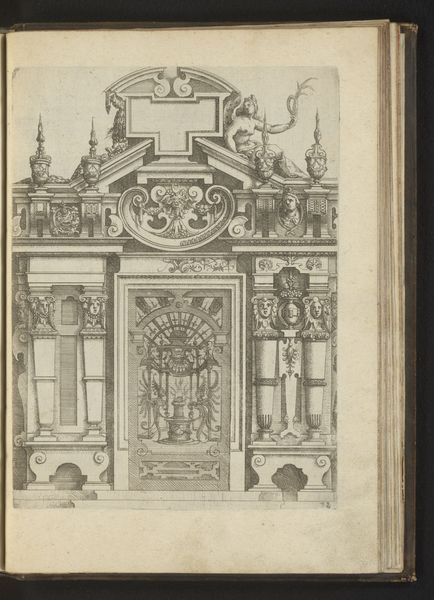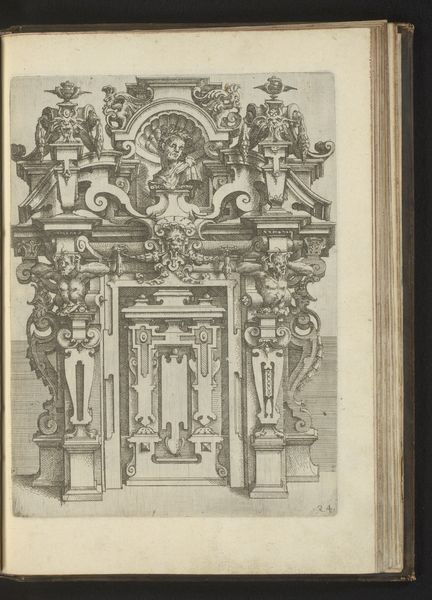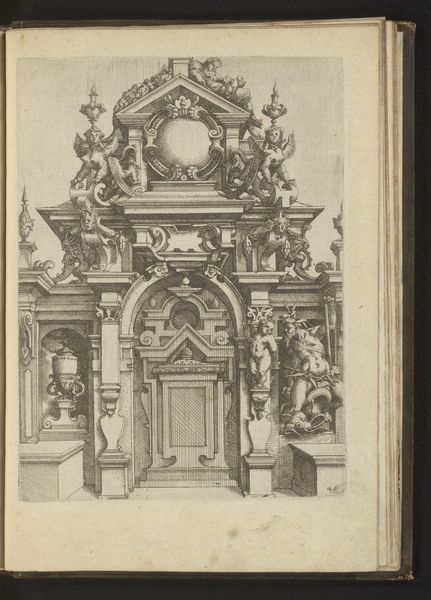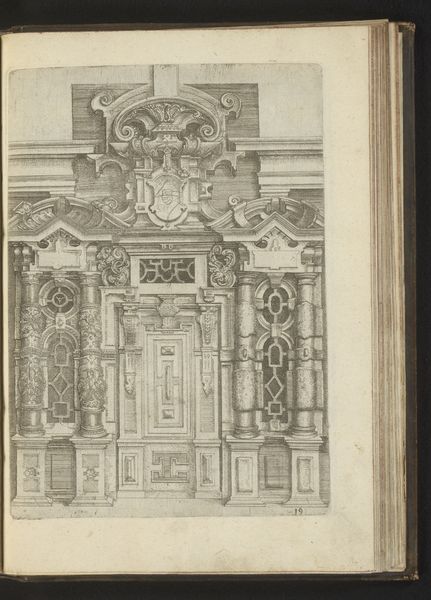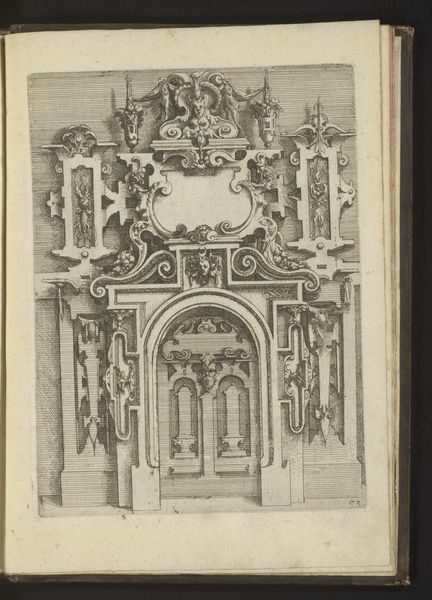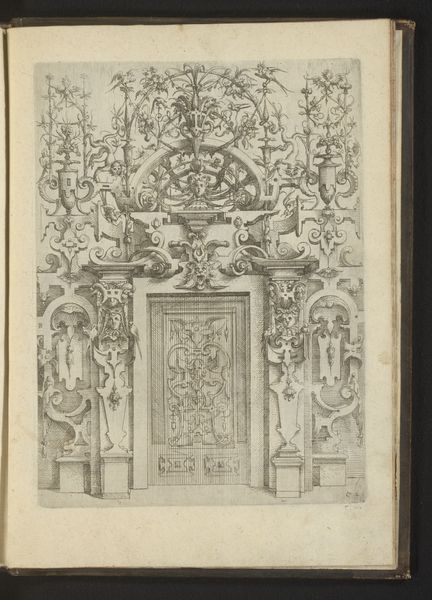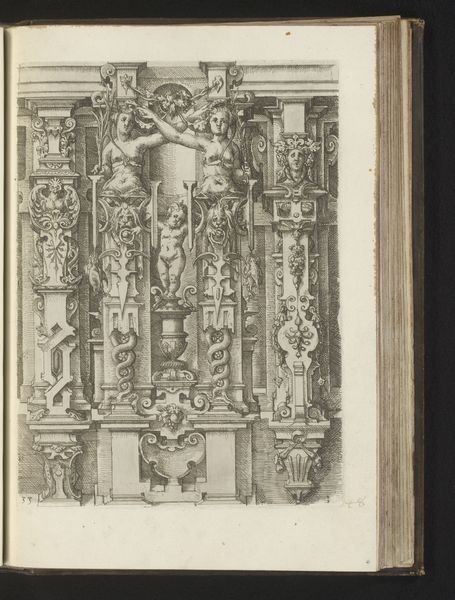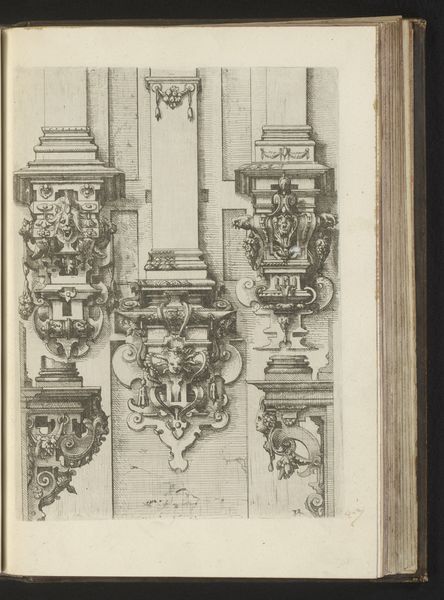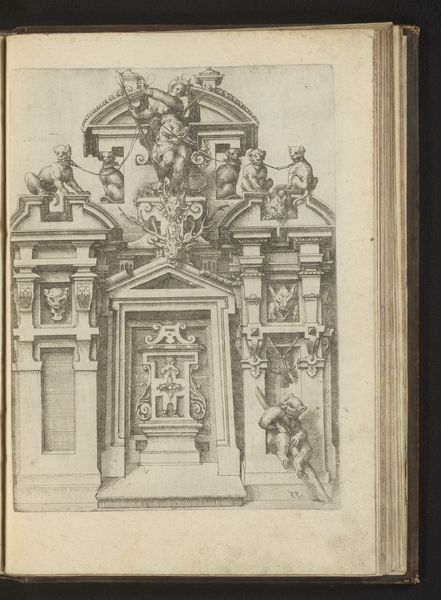
Portaal geflankeerd door twee hermen en met leeuw in het deurstuk 1593 - 1595
0:00
0:00
drawing, ink, architecture
#
pen and ink
#
drawing
#
ink drawing
#
allegory
#
form
#
11_renaissance
#
ink
#
geometric
#
line
#
northern-renaissance
#
architecture
Dimensions: height 248 mm, width 186 mm
Copyright: Rijks Museum: Open Domain
Curator: What a severe facade, no? Editor: Severe yet incredibly ornate. All those carefully rendered details. It’s a masterclass in visual storytelling, though I'm struggling to decipher the narrative. Curator: Let’s explore. This is "Portaal geflankeerd door twee hermen en met leeuw in het deurstuk," created with pen and ink between 1593 and 1595 by Wendel Dietterlin. What we have here is not merely an architectural study, but a symbolic representation of... well, that is our challenge. Look at the symmetry and the intricate embellishments—every line has a purpose, a story. Editor: That duality is striking. On the one hand, you have this celebration of form, symmetry, order. And then, just beneath the surface, is what seems like chaos. Mischievous figures above a very imposing portal. Are we talking about the construction of power? Whose access is being controlled, or celebrated? Curator: Power certainly manifests here, and access too—both physically, and allegorically, through symbolism and geometric order, through which Dietterlin suggests a specific philosophical system. The Lion is a very potent symbol here. Editor: Definitely, and you can't help thinking about class and access when you see such formidable gates. Consider how these structures shaped the experiences of people moving through urban environments. Whose spaces are they actually carving out and controlling, and what do these grand portals signify in terms of privilege and authority? Curator: Dietterlin worked in the tradition of the Northern Renaissance. The Renaissance valued clarity, while the North still delighted in detail that evoked emotion. We should keep this historical tension in mind. To the period’s elite, I wonder what ideas Dietterlin sought to evoke. Editor: It does make you question who could pass through such a formidable door. It certainly makes you think about what side of that power you would be on. Curator: And, ultimately, perhaps, what powers *built* the walls you yourself dwell behind. A sober thought with which to continue our tour. Editor: Exactly. An invitation to reflect on both past and present. Thanks to Dietterlin for opening this portal in our minds, whether we are ready or not!
Comments
No comments
Be the first to comment and join the conversation on the ultimate creative platform.

